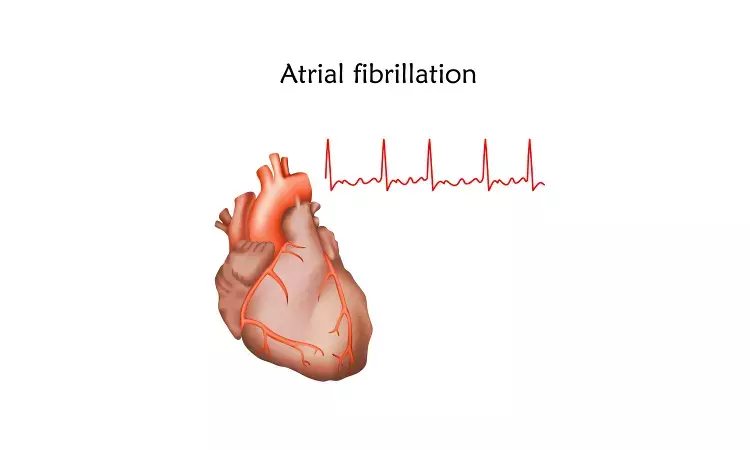- Home
- Medical news & Guidelines
- Anesthesiology
- Cardiology and CTVS
- Critical Care
- Dentistry
- Dermatology
- Diabetes and Endocrinology
- ENT
- Gastroenterology
- Medicine
- Nephrology
- Neurology
- Obstretics-Gynaecology
- Oncology
- Ophthalmology
- Orthopaedics
- Pediatrics-Neonatology
- Psychiatry
- Pulmonology
- Radiology
- Surgery
- Urology
- Laboratory Medicine
- Diet
- Nursing
- Paramedical
- Physiotherapy
- Health news
- Fact Check
- Bone Health Fact Check
- Brain Health Fact Check
- Cancer Related Fact Check
- Child Care Fact Check
- Dental and oral health fact check
- Diabetes and metabolic health fact check
- Diet and Nutrition Fact Check
- Eye and ENT Care Fact Check
- Fitness fact check
- Gut health fact check
- Heart health fact check
- Kidney health fact check
- Medical education fact check
- Men's health fact check
- Respiratory fact check
- Skin and hair care fact check
- Vaccine and Immunization fact check
- Women's health fact check
- AYUSH
- State News
- Andaman and Nicobar Islands
- Andhra Pradesh
- Arunachal Pradesh
- Assam
- Bihar
- Chandigarh
- Chattisgarh
- Dadra and Nagar Haveli
- Daman and Diu
- Delhi
- Goa
- Gujarat
- Haryana
- Himachal Pradesh
- Jammu & Kashmir
- Jharkhand
- Karnataka
- Kerala
- Ladakh
- Lakshadweep
- Madhya Pradesh
- Maharashtra
- Manipur
- Meghalaya
- Mizoram
- Nagaland
- Odisha
- Puducherry
- Punjab
- Rajasthan
- Sikkim
- Tamil Nadu
- Telangana
- Tripura
- Uttar Pradesh
- Uttrakhand
- West Bengal
- Medical Education
- Industry
Catheter ablation no better than drug therapy for treating AF: The CABANA trial

Atrial fibrillation (AF) is strongly associated with many Cardiovascular diseases, such as Heart failure, Coronary Artery Disease (CAD), Valvular Heart disease, diabetes mellitus, and hypertension. Most patients with AF are symptomatic affecting their quality of life, while others remain asymptomatic.
Clinical management of AF has included Antiarrhythmic drug therapy for decades, but with limited effectiveness. Catheter ablation is effective in restoring sinus rhythm in AF, but its effects on long-term mortality and stroke risk are uncertain.
Dr Packer L Douglas MD and team conducted a randomized clinical trial "The CABANA". The CABANA trial revealed that the strategy of catheter ablation in treating AF did not improve the death rate, disabling stroke, serious bleeding, or cardiac arrest compared to medical therapy. However, the estimated treatment effect of catheter ablation was lower-than-expected event rates and crossover treatments which was an important factor to interpret trial results.
The findings of the trial are published in JAMA.
The objective of the trial was to determine whether catheter ablation is more effective than conventional medical therapy for improving outcomes in AF.
The trial for Atrial Fibrillation was an investigator-initiated, open-label, multicenter, randomized trial involving 126 centers in 10 countries. Symptomatic patients with AF aged 65 years and older or younger than 65 years with 1 or more risk factors for stroke were enrolled from November 2009 to April 2016, with follow-up through December 31, 2017. The catheter ablation group (n = 1108) underwent pulmonary vein isolation, with additional ablative procedures at the discretion of site investigators. The drug therapy group (n = 1096) received standard rhythm or rate control drugs guided by contemporaneous guidelines. The primary end point was a composite of death, disabling stroke, serious bleeding, or cardiac arrest. Secondary end points, 3 were considered in this report: all-cause mortality; total mortality or cardiovascular hospitalization; and AF recurrence.
The results of the trial were
• A total of 2204 patients randomized (median age, 68 years; 37.2% female; 42.9% had paroxysmal AF and 57.1% had persistent AF, 89.3% completed the trial.
• 90.8% patients underwent the catheter ablation. Of the patients assigned to drug therapy, 27.5% ultimately received catheter ablation.
• A median follow-up of 48.5 months, the primary end point occurred in 8.0% of patients in the ablation group vs 9.2% of patients in the drug therapy group (hazard ratio [HR], 0.86;P = .30).
• Among the secondary end points, outcomes in the ablation group vs the drug therapy group, respectively, were 5.2% vs 6.1% for all-cause mortality (HR, 0.85; P = .38).
• Death or cardiovascular hospitalization occurred in 51.7% vs 58.1% (HR, 0.83; P = .001), and 49.9% vs 69.5% for AF recurrence (HR, 0.52; P < .001).
Douglas and team concluded that "Among patients with AF, the strategy of catheter ablation, compared with medical therapy, did not significantly reduce the primary composite end point of death, disabling stroke, serious bleeding, or cardiac arrest. However, the estimated treatment effect of catheter ablation was affected by lower-than-expected event rates and treatment crossovers, which should be considered in interpreting the results of the trial."
Reference: Packer DL, Mark DB, Robb RA, et al. Effect of Catheter Ablation vs Antiarrhythmic Drug Therapy on Mortality, Stroke, Bleeding, and Cardiac Arrest Among Patients With Atrial Fibrillation: The CABANA Randomized Clinical Trial. JAMA. 2019;321(13):1261–1274. doi:10.1001/jama.2019.0693.
Medical Dialogues consists of a team of passionate medical/scientific writers, led by doctors and healthcare researchers. Our team efforts to bring you updated and timely news about the important happenings of the medical and healthcare sector. Our editorial team can be reached at editorial@medicaldialogues.in.
Dr Kamal Kant Kohli-MBBS, DTCD- a chest specialist with more than 30 years of practice and a flair for writing clinical articles, Dr Kamal Kant Kohli joined Medical Dialogues as a Chief Editor of Medical News. Besides writing articles, as an editor, he proofreads and verifies all the medical content published on Medical Dialogues including those coming from journals, studies,medical conferences,guidelines etc. Email: drkohli@medicaldialogues.in. Contact no. 011-43720751


